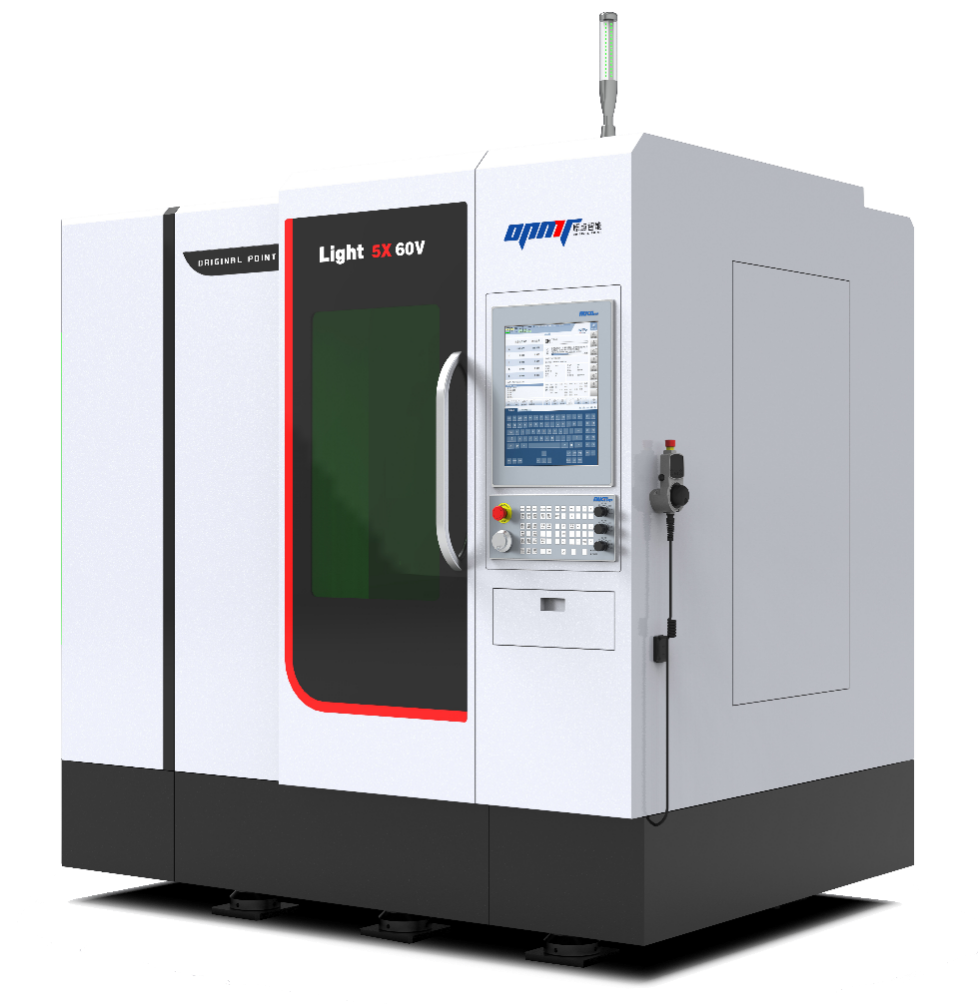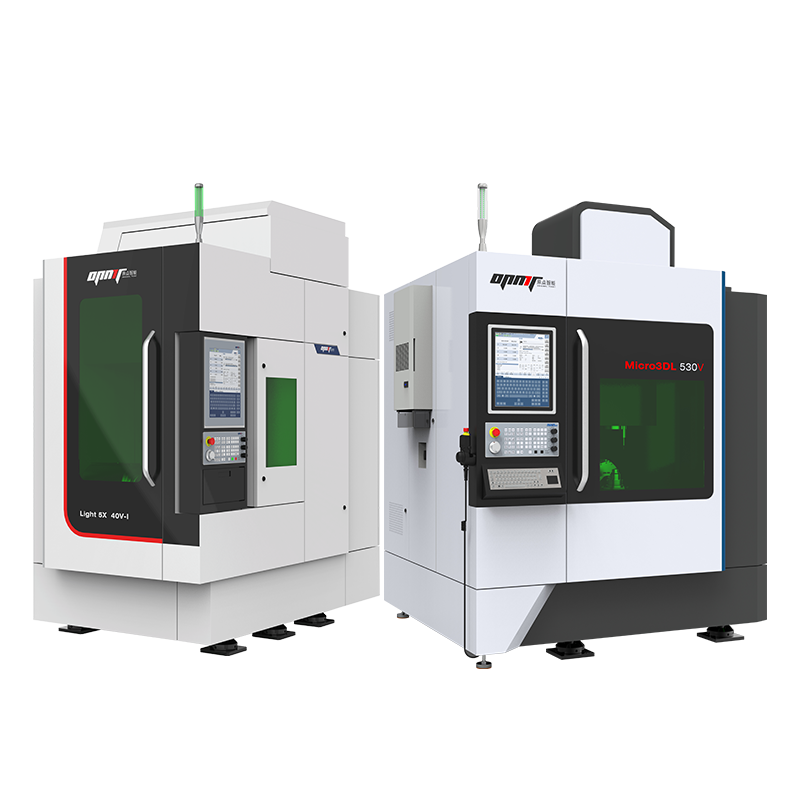PCD (Polycrystalline Diamond) tool laser machining is a precise and efficient method for processing ultra-hard materials such as PCD, CBN, and CVD. This technology delivers sub-5 micron accuracy and superior edge quality with repeatability that surpasses traditional EDM and grinding. It enables manufacturers to increase throughput by up to three times and reduce per-part costs by 40-60%. This comprehensive guide presents detailed technical specifications, practical implementation guidelines, and troubleshooting strategies to support manufacturing professionals and laser system engineers.
What Is PCD Tool Laser Machining, and Why Is It Important?
PCD tool laser machining uses advanced five-axis CNC laser systems to process ultra-hard cutting tools with extreme precision and minimal heat distortion. The process ensures that cutting edges meet tight tolerances (under 5 microns) and retain sharp geometry without chipping or micro-cracking. As ultra-hard materials become standard in high-performance tooling, laser machining provides a competitive advantage by reducing cycle times and improving product consistency.

Key Takeaways:
- Achieves repeatable contouring within ±0.003 mm geometric tolerance.
- Improves tool cutting edge quality compared to EDM or grinding.
- Enables faster production with reduced secondary finishing.
- Supports sustainable manufacturing without coolant or abrasives.
What Are the Core Technical Specifications to Consider in PCD Tool Laser Machining?
Selecting the right laser machining system requires an understanding of key performance parameters related to mechanics, optics, and control systems.
Beam and Laser System Parameters
- Beam quality (M²): Less than 1.2 ensures tight focus and precision energy delivery.
- Pulse widths: Options range from nanosecond (1 ns) to femtosecond (100 fs) lasers depending on material and application.
- Laser power: Typical processing lasers range from 50 W to 200 W with stable output (+/- 0.5%).
- Wavelength: Common wavelengths used include 1064 nm for PCD and 532 nm for CVD materials.
Mechanical Precision and Work Envelope
- Linear axes: High-performance linear motors with closed-loop grating scale feedback deliver repeatability down to 0.003 mm.
- Rotary axes: Precision torque-driven axes offer positioning accuracy within ±5 arc seconds, enabling complex 5-axis contour machining.
- Worktable load: Capacity up to 300 kg allows multi-part fixturing and large tool sets.
- Work envelope sizes: Vary between 400×250×300 mm and 600×600×400 mm depending on model.
Control and Software Features
- Real-time CNC control systems supporting RTCP (tool center point rotation) enhance multi-axis synchronization.
- AI-assisted adaptive control for laser power and path correction improve process stability.
- Integrated high-precision CCD probes perform inline tool measurements for process feedback.
Technical Specification Comparison
| Specification | Light 5X 40V | Light 5X 60V | Micro3D L530V |
|---|---|---|---|
| Work Envelope (X×Y×Z) mm | 400 × 250 × 300 | 600 × 250 × 300 | 600 × 600 × 400 |
| Positioning Tolerance (mm) | 0.005 | 0.005 | 0.002 |
| Repeatability (mm) | 0.003 | 0.003 | 0.001 |
| Laser Type | 100 W Nanosecond Fiber | 100 W Nanosecond Fiber | 50–200 W Femtosecond (532/1064 nm) |
| Beam Quality (M²) | < 1.2 | < 1.2 | < 1.2 |
| CNC System | NUM / NewCon, RTCP | NUM / NewCon, RTCP | NewCon IM, AI Adaptive |
How Does PCD Tool Laser Machining Compare to Traditional Methods?
PCD tool laser machining significantly improves cycle times, surface quality, and cost-efficiency compared to EDM and grinding technologies.
Explanation:
- Cycle Time: Laser machining reduces per-tool processing from 20–30 minutes (EDM) to approximately 5 minutes.
- Surface Finish: Achieves surface roughness Ra below 0.1 μm, better than typical EDM finishes.
- Heat-Affected Zone: Ultrafast laser systems minimize thermal damage with HAZ widths below 1 μm.
- Cost: Part cost reductions of 40-60% through lower consumables and labor.
- Environmental Impact: Laser process eliminates the use of cutting fluids and abrasives.
| Metric | 5-Axis Laser Machining | EDM | Grinding |
|---|---|---|---|
| Cycle Time (Minutes) | ~5 | 20–30 | 15–25 |
| Surface Roughness (Ra) | <0.1 μm | 0.2–0.5 μm | 0.1–0.2 μm |
| Heat-Affected Zone | <1 μm | 20–50 μm | <5 μm |
| Per-Part Cost | Lower by 40–60% | Baseline | Moderate |
| Environmental Impact | Coolant-free, green | Coolant disposal | Abrasive dust |
When and How to Calculate ROI for PCD Tool Laser Machining Investments?
Calculating the ROI for PCD tool laser machining investments involves assessing throughput gains, cost savings, and payback time.
Summary of ROI Calculation Steps:
- Baseline Assessment: Benchmark existing EDM and grinding cycle times and costs.
- Throughput Improvement: Measure laser machining cycle time reduction (typically 3× faster).
- Cost Savings: Account for reduced consumable use and labor.
- Capital Expense and Volume: Factor in equipment purchase price and expected annual production.
- Payback Period: Calculate months to recover investment from aggregate savings.
Example:
- CapEx: $1 million
- Annual volume: 40,000 tools
- Consumable savings: $140,000/year
- Labor savings: $120,000/year
- Estimated Payback: 4 to 5 months
How to Implement PCD Tool Laser Machining Solutions Effectively?
Installation Timeline and Steps:
- Weeks 1-2: Site preparation with precision leveling (±0.01 mm) and electrical setup (380 VAC, 50 A).
- Week 3: Delivery and positioning of machinery; mechanical installation.
- Week 4: Laser beam alignment verifying M² < 1.2; CNC and safety system commissioning.
- Week 5: Proof-of-concept runs using customer-specific tool profiles.
- Week 6: Operator training and final acceptance tests.
Optimization Recommendations:
- Establish batch-specific power and feed rate lookup tables.
- Use inline CCD-based probing for real-time quality control.
- Implement controlled warm-up periods (minimum 30 minutes) to avoid thermal drift.
- Use multi-point probing for fixture alignment accuracy within 2 microns.
What Are Best Practices for Maintenance and Troubleshooting?
- Thermal Drift: Use thermostatic circulating chiller maintaining ±0.1°C. Schedule warm-up 30 minutes before production starts.
- Fixture Alignment: Adopt a 3-point zeroing probe routine before each production run, ensuring fixture repeatability below 2 microns.
- Material Batch Variability: Validate and record laser parameters per batch using FDA-compliant traceability standards.
What Are Typical Applications of PCD Tool Laser Machining?
PCD tool laser machining is deployable across industries including:
- Consumer electronics for micro-tool finishing
- Aerospace for composite and ceramic part machining
- Automotive for high-performance cutting tool manufacturing
- Medical device manufacturing requiring precision micro-drilling
- Tool and die making for complex shape contouring
Related Topics and Resources
For further information, explore these in-depth resources:
- Multi-Axis Linkage Solutions – Techniques to improve motion control precision.
- Water-Guided Laser Technology – Advanced cutting for challenging materials.
- AI-Driven Manufacturing – Smart adaptation for laser processing accuracy.
Disclaimer
This content is compiled by OPMT Laser based on publicly available information for reference only; mentions of third-party brands and products are for objective comparison and do not imply any commercial association or endorsement.




